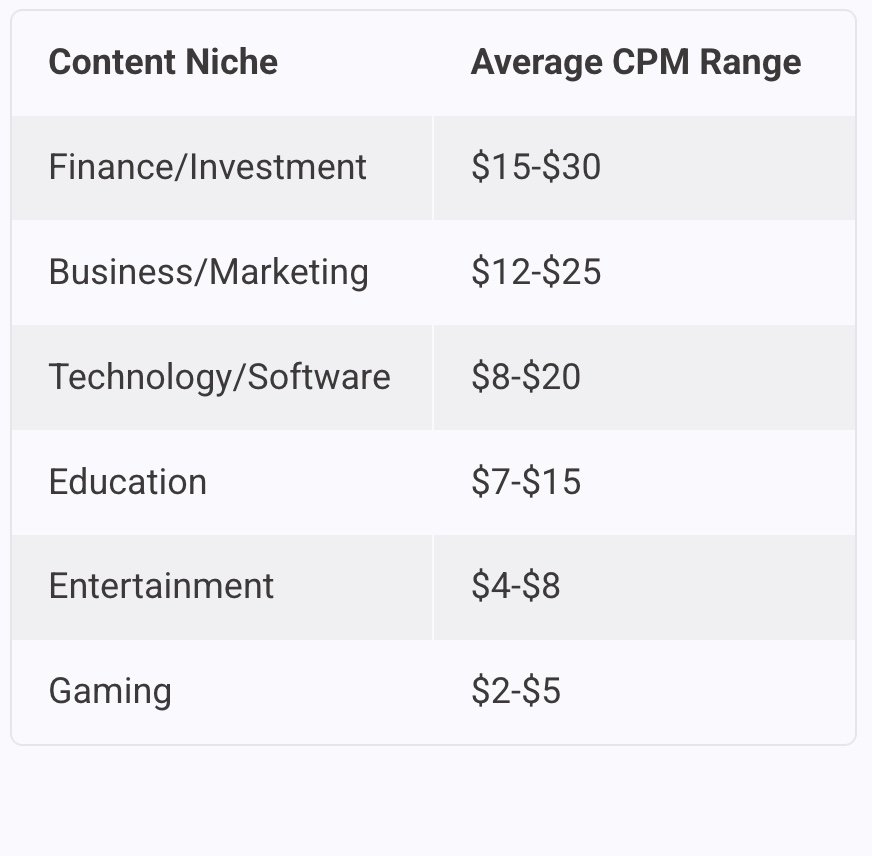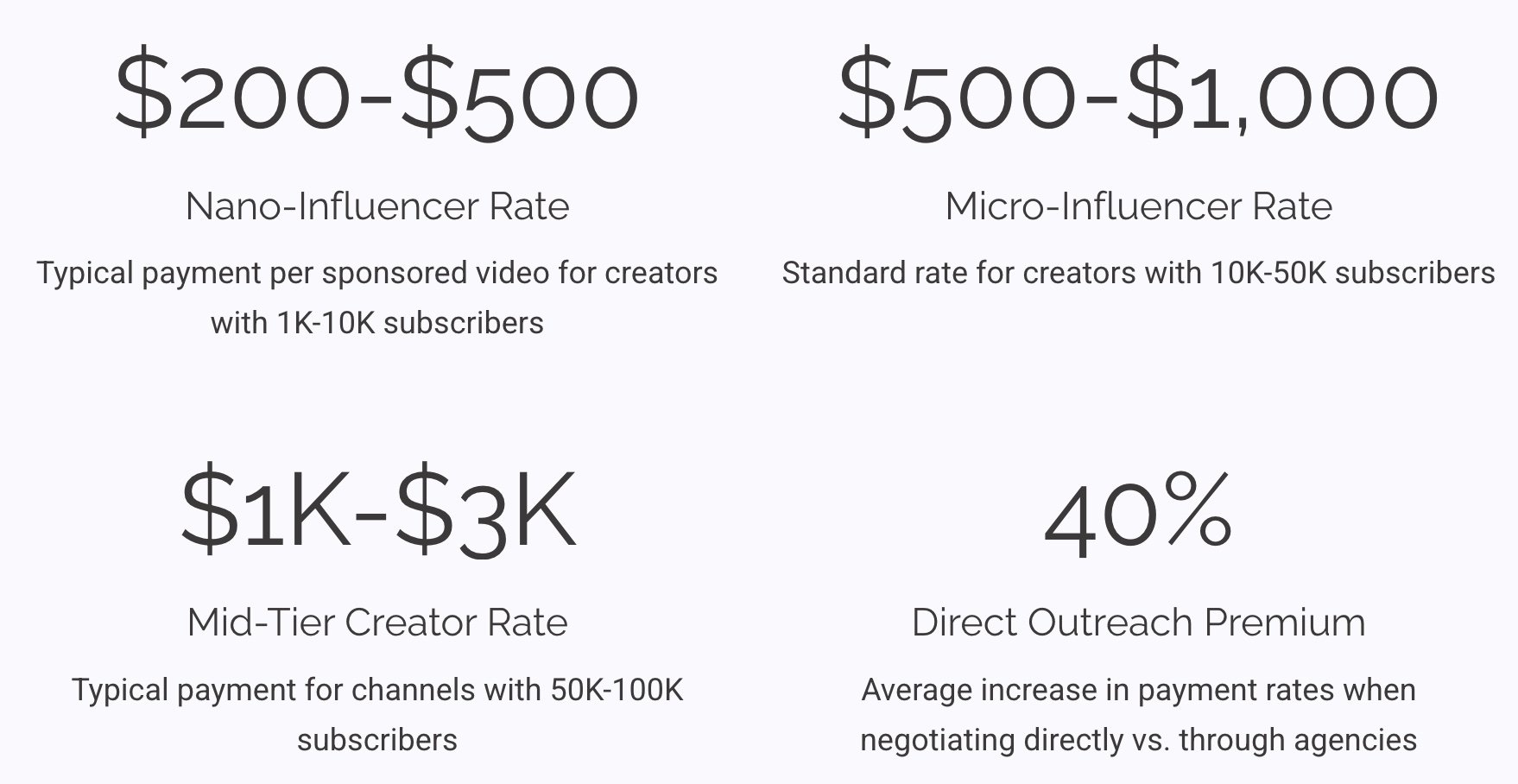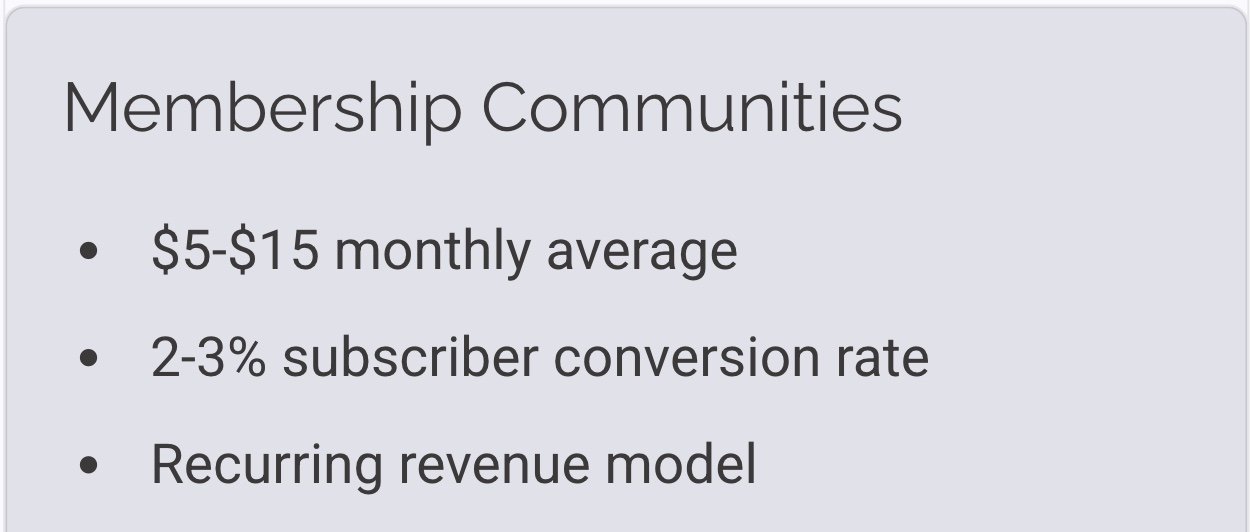Fastest Ways to Monetize on YouTube: The Complete Strategy Guide
Creating content on YouTube can be more than just a hobby—it can become a legitimate source of income when approached strategically. While the YouTube Partner Program requires 1,000 subscribers and 4,000 watch hours to access traditional ad revenue, savvy creators employ multiple monetization strategies simultaneously. With the average YouTuber earning $3-$5 per 1,000 video views, and the stark reality that the top 3% of creators earn 90% of all YouTube revenue, diversification is essential for sustainable income. This guide explores the fastest and most effective ways to turn your YouTube channel into a profitable business venture.
YouTube Partner Program: The Foundation of Monetization
The YouTube Partner Program (YPP) remains the cornerstone of YouTube monetization, providing creators access to advertising revenue once they've established a minimum audience base. To qualify, creators must reach two significant milestones: accumulating 1,000 subscribers and generating 4,000 watch hours within 12 months. Additionally, you'll need to create and link an AdSense account to receive payments from Google.
Once accepted into the program, creators receive 55% of the advertising revenue generated from their videos, with YouTube retaining the remaining 45%. This revenue-sharing model has remained consistent for years, though it's important to understand that not all views are monetized equally. CPM rates (cost per thousand impressions) vary dramatically based on your content niche, ranging from as low as $2 in gaming categories to as high as $30 in finance, business, and technology sectors.
The breakdown factors of monetizing on YouTube.
While the YPP represents the most straightforward path to YouTube monetization, the qualification threshold means it's often not the "fastest" way to generate revenue. Smart creators typically implement additional monetization strategies while working toward YPP eligibility, creating multiple revenue streams from day one.
Strategic Content Niches for Higher CPMs
One of the fastest ways to increase your YouTube earnings is by strategically selecting content niches with higher CPM (Cost Per Mille) rates. The variance between niches is substantial, with finance content commanding premium rates of $15-$30 CPM compared to gaming content at just $2-$5 CPM. This means that 1,000 views on a finance video could generate up to 15 times more revenue than the same number of views on a gaming video.
Tutorial and how-to content consistently outperforms other formats, generating approximately 70% higher watch time compared to entertainment videos. This extended engagement benefits monetization in two critical ways: it increases the number of mid-roll ad opportunities and improves your channel's standing with the YouTube algorithm, leading to more recommendations and organic growth.
There is a wide variance in niches.
Product review videos represent another high-value content type, converting viewers to customers at 2-3 times the rate of standard content. This heightened commercial intent makes these videos particularly attractive to advertisers, resulting in higher CPMs and creating natural opportunities for affiliate marketing integration.
Seasonal considerations should also factor into your content strategy. During Q4 (October-December), ad rates typically increase by 25-50% above baseline as advertisers increase spending for the holiday shopping season. Planning your most commercially viable content for this period can significantly boost your annual revenue.
Perhaps most importantly, targeting commercial intent keywords in your content can increase monetization potential by up to 3 times. Phrases like "best products for," "how to buy," or "product comparison" signal purchase intent to both the YouTube algorithm and advertisers, attracting higher-paying advertisements and more motivated viewers who are more likely to click through affiliate links or purchase recommended products.
Affiliate Marketing: Immediate Revenue Without Thresholds
Affiliate marketing stands out as one of the fastest paths to YouTube monetization because it has no subscriber threshold requirements and can be implemented from your very first video. Unlike ad revenue through the YouTube Partner Program, affiliate marketing allows creators to earn commissions by promoting products or services and directing viewers to purchase through specialized tracking links.
The workflow of affiliate marketing
Amazon Associates remains the most accessible program for beginners, offering 1-10% commission rates depending on product category. Technology products typically fall in the 2-4% range, while luxury beauty items can reach 10%. For tech-focused creators, specialized affiliate programs through manufacturers like Razer, Logitech, or Dell offer substantially higher commissions of 10-20%, though they may have stricter approval requirements.
Software as a Service (SaaS) referrals represent some of the highest-value affiliate opportunities, with payments ranging from $50 to $200 per conversion. These programs are particularly valuable because they often involve recurring commissions for subscription-based products, creating passive income streams from a single referral.
The placement and presentation of affiliate links significantly impact conversion rates. Well-crafted descriptions with clear calls-to-action typically convert at 2-5% when paired with review or tutorial content. Mentioning specific links verbally during your video can increase click-through rates by 30-40% compared to silent placement in descriptions alone.
It's essential to note that the Federal Trade Commission (FTC) requires transparent disclosure of affiliate relationships. All videos containing affiliate links must include clear disclosures, typically at the beginning of the video and in the written description. Failure to disclose these relationships can result in penalties and damage viewer trust.
Sponsored Content and Brand Deals
Sponsored content and brand partnerships represent one of the most lucrative and direct forms of YouTube monetization. Unlike passive income streams like advertising, sponsored videos involve creating content specifically promoting a brand's products or services in exchange for direct payment. The significant advantage of brand deals is that they don't necessarily require massive audiences – even creators with smaller, highly engaged niche audiences can secure meaningful partnerships.
Average range for influencer content.
Securing sponsored content opportunities has become increasingly accessible through specialized platforms that connect creators with brands. Services like Grapevine, #paid, and FameBit (now YouTube BrandConnect) function as marketplaces where brands can browse creator profiles and propose collaboration opportunities. For newer creators, these platforms often provide the simplest entry point into sponsored content.
The format of sponsored content significantly impacts both viewer reception and conversion rates. Data suggests that 30-second integrations within otherwise organic content convert better than full sponsored videos. These native integrations feel less intrusive to viewers while still delivering value to sponsors. Many experienced creators negotiate a balance of integration types in their contracts to maintain audience engagement.
While platforms can facilitate connections, direct outreach to brands yields significantly higher rates – approximately 40% more than agency-facilitated deals. Successful direct outreach strategies include creating a professional media kit highlighting channel demographics, engagement metrics, and previous sponsorship successes. Brands particularly value audience alignment, engagement quality, and production values when evaluating potential partnerships.
For maximum effectiveness, sponsored content should align naturally with your existing content and audience interests. Maintaining authenticity in sponsored videos preserves audience trust and typically results in higher conversion rates for sponsors, leading to repeat business opportunities and long-term partnerships that provide stable income.
Digital Products and Membership Models
Creating Sustainable Direct Revenue
While advertising and affiliate partnerships can generate significant revenue, developing your own digital products and membership offerings often creates the most sustainable and scalable income streams. These models bypass platform algorithms and middlemen, allowing creators to capture significantly more value directly from their most engaged fans.
Premium course creation represents one of the highest-margin opportunities, with established content creators commanding $997-$1997 for comprehensive educational products. Platforms like Teachable, Kajabi, and Thinkific provide turnkey solutions for hosting, selling, and delivering course content, typically charging either monthly fees or revenue-sharing percentages (usually 5-10%).
The content format and pricing strategy significantly impact conversion rates. Case studies show that structured, outcome-focused courses with clear transformation promises convert at 3-5x the rate of informational-only content. Additionally, offering tiered pricing options (basic, standard, premium) typically increases overall revenue by 25-30% compared to single-price offerings.
Membership communities via platforms like Patreon, Buy Me a Coffee, or YouTube's native Channel Memberships create predictable monthly income through recurring subscriptions. The average creator earns $5-$15 per member monthly, with tiered offerings providing different levels of access and benefits. YouTube's built-in membership program offers tiers ranging from $1.99 to $49.99 per month, with creators receiving approximately 70% after platform fees.
The sustainability of membership models depends heavily on consistent delivery of exclusive value. Successful creators typically offer a combination of early access to regular content, completely exclusive content, direct access to the creator through private communities or Q&A sessions, and member-only discounts on other products. Data indicates that exclusive content generates 4-7x more revenue per view than ad-supported content, making it particularly valuable for creators with highly engaged but potentially smaller audiences.
For creators seeking lower-effort products, digital downloads like templates, presets, workbooks, or software tools can convert at 3-8% with proper promotion. These products typically range from $15 to $97 depending on complexity and perceived value, offering excellent margins with zero marginal cost for each additional sale. The key advantage of digital products is their scalability – once created, they can generate revenue indefinitely with minimal ongoing maintenance.
Alternative Monetization Strategies
Beyond conventional monetization methods, YouTube offers several alternative revenue streams that creators can leverage to diversify their income. These options often complement primary strategies while providing additional touchpoints for audience engagement and support.
Merchandise Sales
Integrated platforms like Printful and Teespring connect directly with YouTube, enabling below-video merchandise shelves
Super Chat & Super Thanks
Allow viewers to purchase highlighted messages and animations during livestreams and on standard videos
Channel Memberships
Subscription-based support with tiered membership levels offering exclusive perks and content
Content Licensing
Licensing original content to media outlets with revenue-sharing agreements
Merchandise sales have evolved significantly with YouTube's integrated merchandising shelf, which appears directly below videos for eligible creators. Platforms like Printful and Teespring (now Spring) handle all aspects of production, shipping, and customer service, typically offering 15-20% profit margins on physical goods. The most successful creators focus on design-forward products that extend their brand identity rather than simply placing logos on standard items.
Super Chat and Super Thanks features provide immediate revenue through viewer interactions. During livestreams, Super Chat allows viewers to purchase highlighted messages ranging from $2 to $50, with messages appearing more prominently based on contribution amount. Similarly, Super Thanks enables viewers to send monetary appreciation on standard videos. These features typically convert at 0.5-2% of active viewers during engaging livestreams, with higher rates during special events or announcements.
For creators with at least 25,000 subscribers, the YouTube BrandConnect program offers an official pathway to sponsored content opportunities. This program matches creators with brands seeking partnerships, with YouTube facilitating the relationship and taking a percentage of the deal. While convenience is a benefit, direct brand relationships typically yield higher rates, making BrandConnect most valuable for creators without established sponsorship networks.
Content licensing represents an often-overlooked opportunity, particularly for creators producing high-quality, unique footage. Media outlets, production companies, and stock footage platforms offer licensing agreements that typically share 50-75% of revenue with the original creator. Creators in niches like nature filming, urban exploration, or specialized tutorials find this particularly valuable as their content may have applications beyond YouTube's platform.
Analyzing and Optimizing Your Revenue Strategy
The difference between moderately successful and highly profitable YouTube channels often comes down to systematic analysis and optimization of monetization strategies. Treating your channel as a data-driven business can significantly increase revenue without necessarily growing your audience.
Track Key Metrics
Monitor RPM, CPM, clickthrough rates, and audience retention in YouTube Analytics to identify your most valuable content types.
Conduct A/B Testing
Systematically test thumbnails, titles, and video formats to increase CTR by 25-40% and improve overall channel performance.
Optimize Upload Schedule
Analyze audience activity patterns to determine optimal posting times, potentially increasing viewership by up to 35%.
Repurpose Content
Extend reach by adapting content for multiple platforms, driving 2-3x audience growth and creating cross-platform synergy.
Diversify Platform Presence
Establish presence across YouTube, TikTok, and Instagram to increase brand deal opportunities by approximately 60%.
YouTube Analytics provides powerful insights into monetization patterns that can guide strategy refinement. The most critical metrics to track are revenue per mille (RPM), cost per mille (CPM), and audience retention. RPM measures overall revenue per 1,000 views, while CPM specifically tracks advertising revenue. By comparing these metrics across different content categories, you can identify your most profitable topics and formats, allowing you to allocate production resources strategically.
Thumbnail and title optimization through systematic A/B testing consistently yields some of the highest ROI activities for monetization. Channels implementing rigorous testing protocols typically see Click-Through Rate (CTR) improvements of 25-40%, directly translating to increased views without creating additional content. Test variables sequentially rather than simultaneously to identify which elements drive improvements, and maintain detailed records of results to identify patterns over time.
Content repurposing represents another high-leverage optimization strategy. Top-performing creators systematically adapt their YouTube content for platforms like TikTok, Instagram Reels, and LinkedIn, driving 2-3x total audience reach compared to YouTube-only distribution. This cross-platform approach creates additional monetization opportunities and functions as a marketing funnel, driving new subscribers back to the primary YouTube channel.
Perhaps most importantly, establishing a multi-platform presence significantly increases brand deal opportunities. Data indicates that creators with strong presences across YouTube, TikTok, and Instagram command approximately 60% higher sponsorship rates than single-platform creators with comparable total audiences. This premium reflects brands' growing preference for integrated, cross-platform campaigns that reach audiences at multiple touchpoints.








